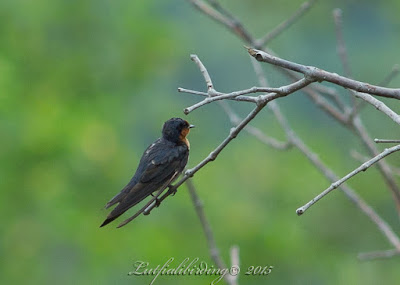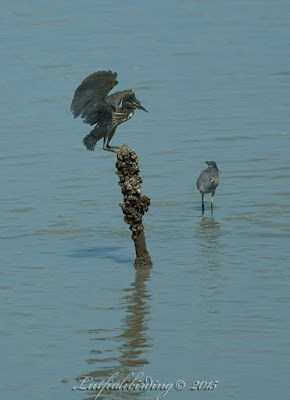I like to visit this place not because of the exhibits in the Museum Kota Kayang but because of the surrounding hill which is a home for many raptors. There is a paddy field on the west side of the museum which is about ten acres in size which provides the raptors a good hunting ground for snakes and rodents. On the other side of the hill a bigger paddy field area is located on both sides of the riverbank. Not far away is the Kuala Perlis town and the muddy shoreline which provide another option for the raptors to find food.
 |
| One of the small hills on the side of the riverbank |
 |
| Mangrove-lined river |
I have been to this place a few times and i have spotted a few raptor species like the Brahminy Kites, White-bellied Sea Eagles, Black-shouldered Kites and Black Kites, i think. They like to make their nests in the tree canopy high up on the hill which give them a vantage point to spot their prey down in the paddy fields. They would fly in circle over the paddy fields, river, mangrove areas and the shoreline to look for prey.
During this visit i only spotted two species, the Black-shouldered Kite and Black Kite. They were circling in the air near the riverbank around noon.
 |
| Black Kite (need help in verification) |
 | |
| Black-shouldered Kite |
There are a few other species hanging out along the riverbanks such as Striated Barbets, White Collared Kingfisher and Pacific Swallows.
 |
| Striated Barbet |
 |
| Pacific Swallow |
I also spotted Stork-billed Kingfisher flying across the river but i was too slow to capture it. You can give this place a try and if you cannot find any birds well at least you can go visit the museum and learn something about the history of Perlis.
Thanks for reading, and happy birding.






















































